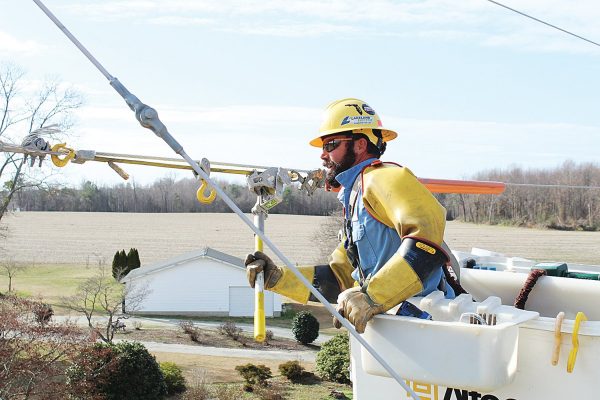New technology to improve worker safety – The Wilson Times
Wilson Energy will soon have new technology that will protect the city’s linemen.
“Safety is Wilson Energy’s highest priority,” said Daniel Gillen, engineering and systems planning manager. “We are thrilled that we can provide increased protection to our line workers from burns from an arc flash.”
An arc flash happens when there is a fault or short circuit, emitting a bright flash and a tremendous amount of heat.
“If a line worker is close to the arc flash, they can be severely burned,” said Gillen, who noted the flame-retardant clothing given to employees can reduce some of the risk. “The heat from the arc flash can also be reduced if the amount of electrical current flowing and causing the arc can be reduced. This is the purpose of the new relays.”
The Wilson City Council approved a $305,036 allocation at its January meeting to purchase and install protective relays to replace aging devices at several city substations.
“The circuit breaker in the home or business protects the electric circuit from damage due to overloading or a short circuit. Protective relays perform a similar function on the city’s electric distribution system,” Gillen said. “They detect when there is a short circuit or a fault on the distribution system that needs to be de-energized — such as contact by squirrels, trees, carts hitting poles, etc. — and operate the substation breaker to de-energize the circuit.”
While the relays will be installed at all times on the system, they are designed to be less sensitive when someone is not actively working on the circuit to minimize outages.
“The new relays will have the ability to be more sensitive when a line worker is working on an energized circuit,” Gillen said. “This heightened sensitivity will allow the protective devices to operate faster, which decreases the energy of an arc, thus protecting the line worker from more serious burns and injury.”
Gillen said the technology used in the relays has been around for about a decade and the city has them in the newer substations, but this project allows Wilson Energy to replace relays that are more than 20 years old with ones expected to last 30 years.
“While this project requires additional time and money, the payback in worker safety is worth the investment,” he concluded.







